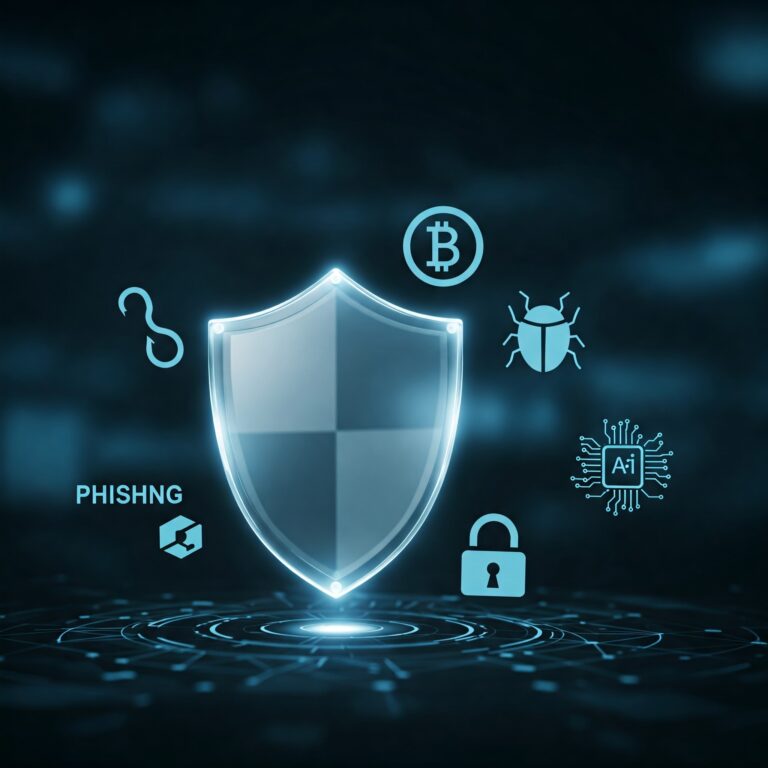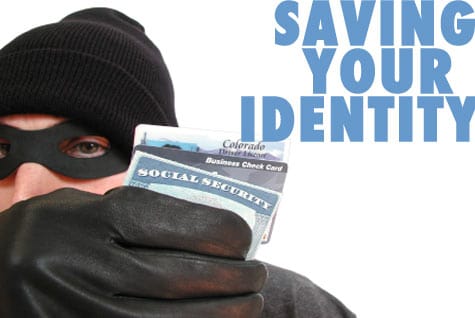Identity Theft Prevention: 20 Essential Tips for 2024 and Beyond
In the digital age, where our personal information is constantly shared and stored online, identity theft has become an ever-present threat. Hackers and scammers are continuously devising new methods to steal our sensitive data, leaving us vulnerable to financial loss, damage to our credit, and even legal complications. It’s crucial to stay vigilant and take proactive steps to protect ourselves from identity theft. In this comprehensive guide, we will provide you with 20 essential tips, covering both traditional and modern techniques, to safeguard your identity in 2024 and beyond.
20 Identity Theft Prevention Tips with Descriptions, Examples, and Prevention
Standard Tips:
- Strong Passwords: Create complex and unique passwords for all your online accounts. Use a combination of uppercase and lowercase letters, numbers, and symbols. Consider using a password manager to securely store your passwords.
- Example: Avoid using easily guessable information like your birthdate or pet’s name. Instead, try a passphrase like “ILoveMy2CatsAnd1Dog!”.
- Prevention: Change your passwords regularly, especially if you suspect a breach.
- Two-Factor Authentication (2FA): Enable 2FA whenever possible. This adds an extra layer of security by requiring a second verification step, such as a code sent to your phone, in addition to your password. holistiquetraining.com
- Example: When logging into your bank account, you might receive a text message with a unique code that you need to enter to complete the login process.
- Prevention: This makes it much harder for hackers to access your accounts, even if they have your password.
- Secure Wi-Fi: Avoid using public Wi-Fi networks for sensitive transactions. Hackers can easily intercept data on unsecured networks. Use a virtual private network (VPN) for added security.
- Example: When using public Wi-Fi at a coffee shop, avoid checking your bank account or making online purchases.
- Prevention: A VPN encrypts your internet traffic, making it difficult for hackers to steal your information.
- Shred Documents: Shred any documents containing sensitive information before discarding them. This includes bank statements, credit card offers, and medical bills.
- Example: Don’t just throw away old bank statements in the trash. Shred them to prevent dumpster divers from accessing your information.
- Prevention: This simple step can prevent identity thieves from physically stealing your information.
- Monitor Your Credit:** Regularly check your credit reports for any suspicious activity. You can get free credit reports from the major credit bureaus annually.
- Example: If you see an account you don’t recognize or a sudden drop in your credit score, it could be a sign of identity theft.
- Prevention: Early detection can help you minimize the damage caused by identity theft.
- Be Careful What You Share: Limit the amount of personal information you share online and on social media. Be wary of phishing scams that try to trick you into revealing sensitive data.
- Example: Don’t post your full birthdate or address on social media. Be suspicious of emails or messages asking for your personal information.
- Prevention: The less information you share, the less likely it is to fall into the wrong hands.
- Secure Your Mail: Collect your mail promptly and consider using a locked mailbox. If you’re going to be away, place a hold on your mail delivery.
- Example: Don’t let mail pile up in your mailbox, especially if it contains sensitive information like checks or credit card statements.
- Prevention: This prevents thieves from stealing your mail and accessing your personal information.
- Secure Your Devices: Use strong passwords or biometric authentication to lock your devices. Install security software and keep it up to date.
- Example: Set a passcode or use fingerprint recognition to unlock your smartphone. Install antivirus and anti-malware software on your computer.
- Prevention: This helps protect your devices from unauthorized access and malware that can steal your information.
Latest Tips:
- Beware of Social Engineering: Scammers are becoming increasingly sophisticated in their tactics. Be wary of unsolicited calls, emails, or messages that try to manipulate you into revealing personal information or clicking on malicious links.
- Example: A scammer might pose as a bank representative and ask for your account details to “verify your identity.”
- Prevention: Never give out personal information over the phone or via email unless you initiated the contact and are sure of the recipient’s legitimacy.
- Data Breaches: Stay informed about data breaches that may have exposed your information. If your data has been compromised, take immediate steps to protect yourself, such as changing passwords and monitoring your accounts.
- Example: If a company you do business with announces a data breach, check if your information was affected and take appropriate action.
- Prevention: Sign up for alerts from credit bureaus and other organizations that monitor data breaches.
- Mobile Security: Be cautious when downloading apps, especially from third-party sources. Some apps may contain malware that can steal your information. Use strong passwords or biometric authentication to lock your mobile devices.
- Example: Only download apps from official app stores and read reviews before installing them.
- Prevention: This helps protect your mobile devices from unauthorized access and malware.
- Secure Online Shopping: Only shop on secure websites (look for “https” in the URL). Use a credit card instead of a debit card for online purchases, as credit cards offer better fraud protection.
- Example: When shopping online, make sure the website has a padlock icon in the address bar and the URL starts with “https.”
- Prevention: This indicates that the website is secure and your information will be encrypted.
- Medical Identity Theft: Be vigilant about protecting your medical information. Review your medical bills and Explanation of Benefits (EOBs) carefully. Report any discrepancies or suspicious activity to your healthcare provider and insurance company.
- Example: If you see medical procedures on your EOB that you didn’t receive, it could be a sign of medical identity theft.
- Prevention: This can prevent someone from using your information to receive medical treatment or file fraudulent claims.
- Tax Identity Theft: File your tax return early to prevent someone else from filing a fraudulent return in your name. Be wary of unsolicited calls or emails claiming to be from the IRS.
- Example: If you receive a call or email from someone claiming to be from the IRS and asking for your personal information, it’s likely a scam.
- Prevention: The IRS will never initiate contact with you via phone or email.
- Child Identity Theft: Monitor your child’s credit report and be cautious about sharing their personal information online.
- Example: If you see accounts or inquiries on your child’s credit report that you don’t recognize, it could be a sign of child identity theft.
- Prevention: This can prevent someone from using your child’s information to open accounts or apply for credit.
- IoT Devices: Secure your Internet of Things (IoT) devices with strong passwords and unique usernames. Change default passwords and keep the firmware up to date.
- Example: Change the default password on your smart thermostat and router.
- Prevention: This helps protect your IoT devices from being hacked and used to access your network or steal your information.
- Biometric Data: Be cautious about sharing your biometric data, such as fingerprints or facial recognition scans. If possible, opt for alternative authentication methods.
- Example: If a service offers the option to use a password instead of a fingerprint, consider using a password.
- Prevention: Once your biometric data is compromised, it’s compromised forever.
- Dispose of Electronics Safely: When disposing of old computers, smartphones, or other electronic devices, make sure to wipe the data securely.
- Example: Use a data wiping software or physically destroy the hard drive before discarding an old computer.
- Prevention: This prevents someone from recovering your personal information from discarded devices.
- Travel Safety: When traveling, be extra cautious about protecting your personal information. Use a RFID-blocking wallet or sleeve to protect your credit cards from electronic pickpocketing.
- Example: When traveling abroad, keep your passport and other important documents in a hotel safe.
- Prevention: This helps protect your personal information from being stolen while you’re traveling.
- Educate Yourself and Others: Stay informed about the latest identity theft trends and scams. Share this information with your family and friends to help them protect themselves.
- Example: Attend a seminar or workshop on identity theft prevention. Share articles or tips on social media.
- Prevention: Knowledge is power when it comes to preventing identity theft.
10 Q&A on Identity Theft in 2024
- What are the most common types of identity theft in 2024?
- Credit card fraud, tax identity theft, and medical identity theft are among the most common types of identity theft in 2024.
- How can I tell if I’m a victim of identity theft?
- Signs of identity theft include unfamiliar accounts on your credit report, bills for purchases you didn’t make, and denied credit applications.
- What should I do if I think I’m a victim of identity theft?
- If you suspect you’re a victim of identity theft, contact the companies where the fraud occurred, file a police report, and place a fraud alert on your credit reports.
- How can I protect my child from identity theft?
- Monitor your child’s credit report, be cautious about sharing their personal information online, and teach them about online safety.
- What are some of the latest identity theft scams to watch out for in 2024?
- Social engineering scams, phishing attacks targeting data breaches, and scams related to COVID-19 relief programs are among the latest threats.
- How can I protect my business from identity theft?
- Implement strong security measures, educate your employees about identity theft prevention, and have a plan in place for responding to a data breach.
- What are the long-term consequences of identity theft?
- Identity theft can have long-lasting consequences, including damage to your credit, difficulty obtaining loans or credit cards, and even legal problems.
- How can I recover from identity theft?
- Recovering from identity theft can be a long and complex process. It involves contacting creditors, filing police reports, and potentially working with a credit counselor.
- Where can I get help if I’m a victim of identity theft?
- The Federal Trade Commission (FTC) provides resources and assistance to victims of identity theft. You can also contact your local police department or credit bureaus for help.
- What are some resources I can use to learn more about identity theft prevention?
- The FTC’s IdentityTheft.gov website, the Identity Theft Resource Center, and the National Cyber Security Alliance are valuable resources for information on identity theft prevention.
Where to Report Identity Theft:
- Federal Trade Commission (FTC): Report identity theft to the FTC online at IdentityTheft.gov or by phone at 1-877-ID-THEFT (1-877-438-4338).
- Local Police Department: File a police report with your local police department.
- Credit Bureaus: Contact the major credit bureaus (Equifax, Experian, and TransUnion) to place a fraud alert or credit freeze on your credit reports.
- Companies where the fraud occurred: Contact the companies where the fraud occurred (e.g., banks, credit card companies, healthcare providers) to report the identity theft and take steps to protect your accounts.
Conclusion:
Protecting your identity requires ongoing vigilance and proactive measures. By following these 20 essential tips and staying






